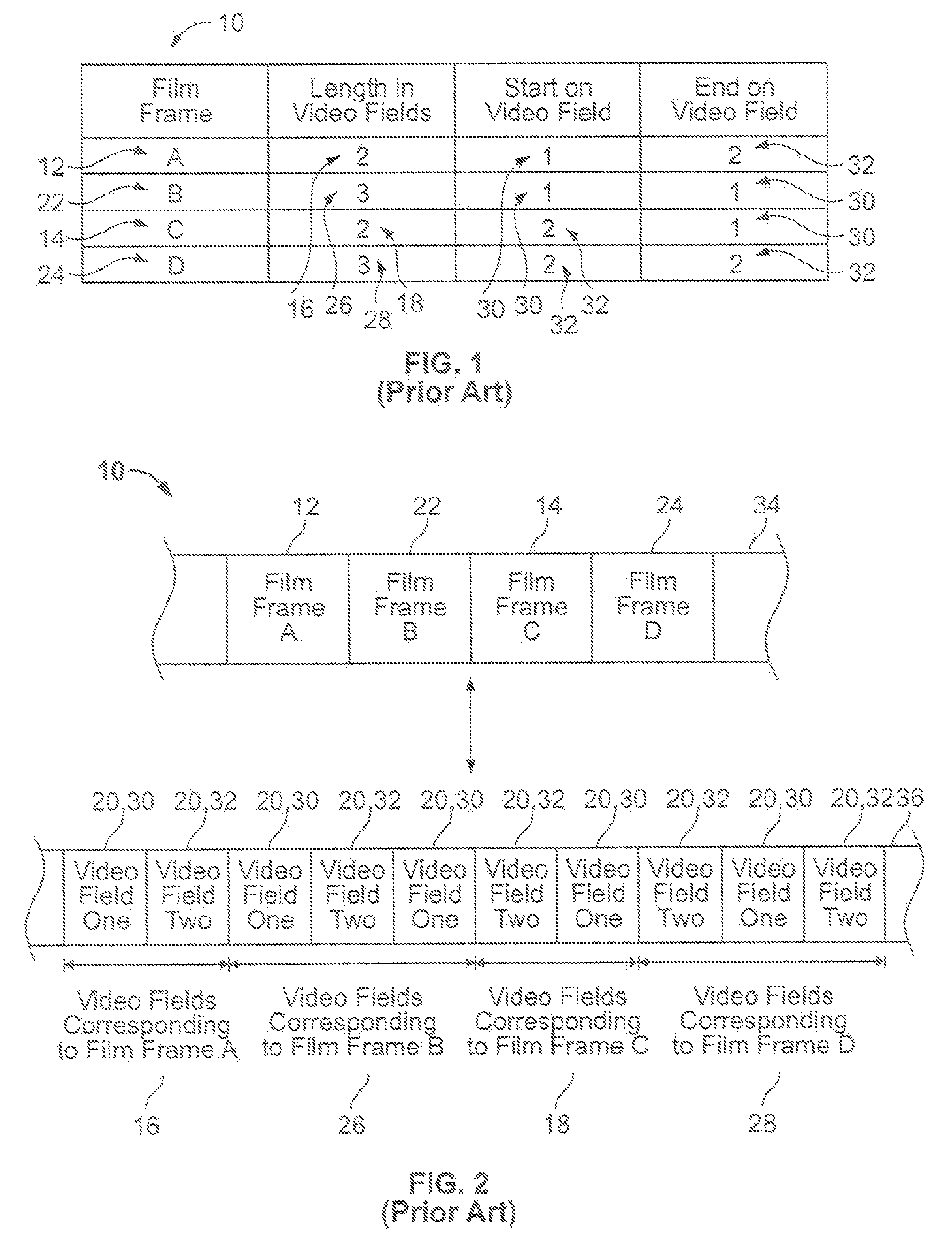Method and apparatus for providing lossless data compression and editing media content
a lossless data and media content technology, applied in the field of image processing, can solve the problems of large amount of original film footage, high production cost, and high production cost of a featur
- Summary
- Abstract
- Description
- Claims
- Application Information
AI Technical Summary
Benefits of technology
Problems solved by technology
Method used
Image
Examples
Embodiment Construction
[0040]Referring to FIG. 3, by utilizing an efficient image-matching algorithm, it is possible to identify dissimilar and similar film frames 38 across multiple takes 40. Similar film frames can then be collapsed into a single film frame 42, and the redundant film frames 44 can be replaced with metadata links that point to the single “parent” film frame and, if desired, also to the take. For example, if four film frames numbered 123456.dpx, 123488.dpx, 125618.dpx, and 128961.dpx are found to be similar, three of the film frames can be replaced with metadata links that point back to the “parent” film frame numbered 123456.dpx. A directory listing for this example is the following:
[0041]
-rw-r--r--1 paulklampaulklam12M Jan 23 16:45 123455.dpx-rw-r--r--1 paulklampaulklam12M Jan 23 16:45 123456.dpx-rw-r--r--1 paulklampaulklam12M Jan 23 16:45 123457.dpx. . .-rw-r--r--1 paulklampaulklam12M Jan 23 16:45 123487.dpxlrwxr-xr-x1 paulklampaulklam19 Feb 13 18:10 123488.dpx ->123456.dpx-rw-r--r--1 ...
PUM
 Login to View More
Login to View More Abstract
Description
Claims
Application Information
 Login to View More
Login to View More - R&D
- Intellectual Property
- Life Sciences
- Materials
- Tech Scout
- Unparalleled Data Quality
- Higher Quality Content
- 60% Fewer Hallucinations
Browse by: Latest US Patents, China's latest patents, Technical Efficacy Thesaurus, Application Domain, Technology Topic, Popular Technical Reports.
© 2025 PatSnap. All rights reserved.Legal|Privacy policy|Modern Slavery Act Transparency Statement|Sitemap|About US| Contact US: help@patsnap.com



